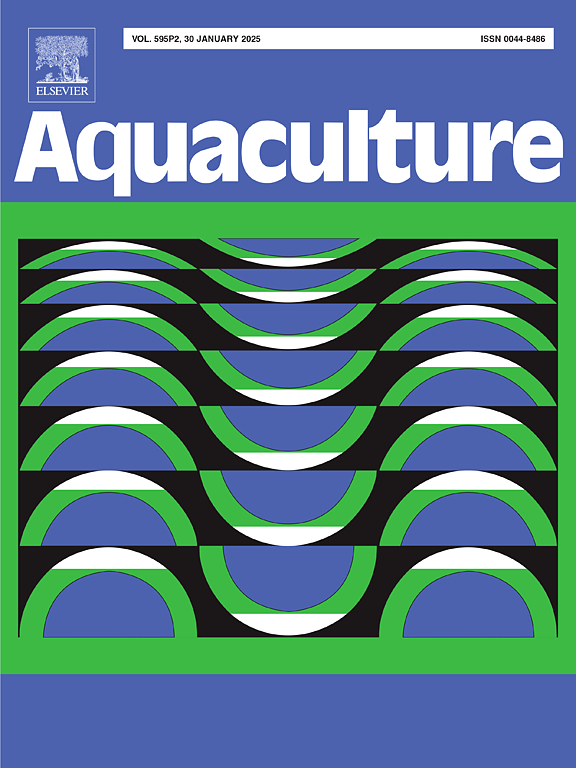Differential expression pattern of hox genes between larval development and metamorphosis of Senegalese sole (Solea senegalensis, Kaup 1858)
IF 3.9
1区 农林科学
Q1 FISHERIES
引用次数: 0
Abstract
The Senegalese sole (Solea senegalensis, Kaup 1858) is a highly valued marine flatfish species in the fishery market. Its aquaculture faces several farming bottlenecks, such as skeletal malformations, which increase production costs. Hox genes are a family of homeotic genes encoding transcription factors that control development in metazoans, primarily the organization of the anteroposterior axis. While some studies have focused on the expression pattern of specific hox genes during embryonic development, this work represents the first holistic expression analysis of all hox genes during larval and metamorphic development. This study will allow, in a first place, having a general knowledge about the behavior of hox genes during these life stages of the Senegalese sole and, secondly, to gain new possible candidate genes involved in the skeletal malformations observed in this fish species during metamorphosis. A RNA-seq approach was employed, and expression data for all hox genes were extracted from samples collected on eight different days after hatching, covering the main phases and stages of larval and metamorphic development. Up to five distinct expression profiles were detected, revealing a marked difference between larval and metamorphic stages. Central hox genes are preferentially expressed in the early larval phases, while posterior hox genes are expressed during metamorphosis. This trend could play a key role in the development of the central-anterior pharyngeal arches and pectoral and caudal fins. These results provide a valuable starting point for further studies to address the high incidence of skeletal abnormalities observed in both larval and metamorphic stages.
塞内加尔鳎(Solea senegalensis, Kaup 1858) hox基因在幼虫发育和变态过程中的差异表达模式
塞内加尔比目鱼(Solea senegalensis, Kaup 1858)是渔业市场上一种价值很高的海洋比目鱼。它的水产养殖面临着几个养殖瓶颈,比如骨骼畸形,这增加了生产成本。Hox基因是一个同源基因家族,编码控制后生动物发育的转录因子,主要是前后轴的组织。虽然一些研究集中在胚胎发育过程中特定hox基因的表达模式,但这项工作首次全面分析了幼虫和变质发育过程中所有hox基因的表达。这项研究将允许,首先,有一个关于hox基因在塞内加尔比目鱼这些生命阶段的行为的一般知识,其次,获得新的可能的候选基因,涉及在这个鱼类在变态期间观察到的骨骼畸形。采用RNA-seq方法,从孵化后8天收集的样本中提取所有hox基因的表达数据,涵盖幼虫和变质发育的主要阶段和阶段。多达五种不同的表达谱被检测到,揭示了幼虫期和变质期的显著差异。中心hox基因在幼虫早期优先表达,而后hox基因在变态期间表达。这种趋势可能在中、前咽弓和胸鳍、尾鳍的发育中起关键作用。这些结果为进一步研究解决在幼虫期和变质期观察到的骨骼异常的高发生率提供了一个有价值的起点。
本文章由计算机程序翻译,如有差异,请以英文原文为准。
求助全文
约1分钟内获得全文
求助全文
来源期刊

Aquaculture
农林科学-海洋与淡水生物学
CiteScore
8.60
自引率
17.80%
发文量
1246
审稿时长
56 days
期刊介绍:
Aquaculture is an international journal for the exploration, improvement and management of all freshwater and marine food resources. It publishes novel and innovative research of world-wide interest on farming of aquatic organisms, which includes finfish, mollusks, crustaceans and aquatic plants for human consumption. Research on ornamentals is not a focus of the Journal. Aquaculture only publishes papers with a clear relevance to improving aquaculture practices or a potential application.
 求助内容:
求助内容: 应助结果提醒方式:
应助结果提醒方式:


